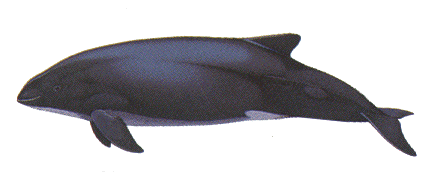
Image credit: www.whales.org.au
1. The name Burmeister’s porpoise can be traced back to Hermann Burmeister, who first described the porpoise in 1865. It’s great that he identified the porpoise, but it’s a bit of a bummer name for the porpoise, sounds like a beer name. But the scientific name makes up for it: Phocoena spinipinnis.
2. As with most porpoises, the Burmeister’s has a triangular dorsal fin, which is unique thanks to a gentle slope towards the flukes.
3. Burmeister’s porpoises are dark gray, grow to be about six feet long and weigh about 160 pounds, with females being slightly larger than males.
4. These porpoises live in the coastal waters of the East and West side of South America and for some reason the Burmeister’s living in the Atlantic Ocean tend to be larger, closer to 6.5 feet long.
5. Burmeister’s tend to hang out in groups of one to four, but have been seen in pods of up to 150 porpoises.
6. They are stealth breathers and when surfacing barely cause a ripple in the water. Burmeister’s tend to hunt small fish and squid, the type varies depending on where they are in the ocean.
7. The Encyclopedia of Marine Mammals lists several types of roundworms found “tightly packed in the cranial sinuses and the inner ear.” Not to mention, several tapeworms in the Burmeister’s intestinal tract.
8. Unfortunately, “published data indicate that 200 to more than 400 porpoises are taken annually in Peruvian gillnet fisheries and used for human consumption.” This is where the list goes from badass to just plain bad.
Leave a Reply